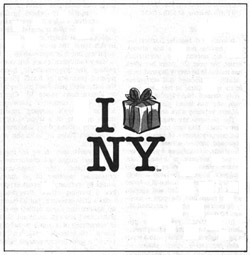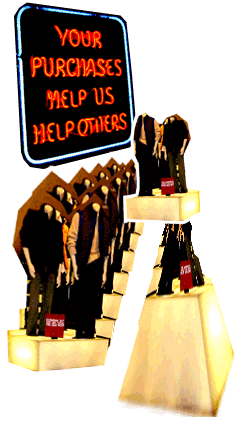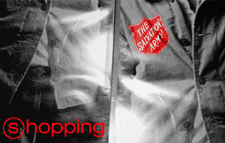 |
||
| softcore news < studios < articles < hardcore firms < jobs < schools < links < calendar < sources < discussion < how to < Check out Bruce Sterling's and Engram's Offsite! |
||


> archived articles > write for core! be famous!
My Holiday Gift to Core77 For many people the holiday season is a montage of benevolence, gluttony, depression, fruitcake, cheer, suicides, schmaltzy sentiment, eggnog and of course, shopping. The holidays always arouse a sense of wonderment--not at the pretty lights, nor at the cleverness of elfin decorators who re-interpret old myths and traditions through the filter of current trends--but rather, wonderment at the mammoth, salubrious force that is the economy. Every year, a sea of money washes heaps of quasi-desirable objects into people's lives. And while the psychology of gift giving that lurks beneath this annual rite is a fascinating area of study, it is another story altogether.
In addition to absolution, the holidays offer a time of reflection and resolution. Last year, alongside the usual, giant electric snowflakes that hung on the lampposts of New York, were banners urging everyone to, "Fight Back and Shop." Around the same time, Rem Koolhas' pre-9.11 book, Projects for Prada Part 1 about designing the shopping experience for Prada mused,
It is interesting that both the local New York boosters and the current high priest of modern architecture both inadvertently elevated the act of shopping to something well, almost religious While the boosters appealed to our sense of civic and communal duty to fight back and shop, the architect was trying, on behalf of his client, to purify the ritual of shopping in the face of its perceived debasement.
While 9.11 and the sniper rampage were extraordinary, and hopefully anomalous events, our entire economic system is predicated on the less extraordinary act of people forking over money for something--whether we actually have the money to do so or not. Witness the consumer confidence index, the metric by which many corporations that employ or engage designers predict future health. Consumer spending--and often, borrowing in order to spend more--is how our economy breathes. So it is not the point that what were once "religious" holidays have now become "commercialized." Rather, it seems more that the commercialism required by the practice of gift giving has become newly imbued with religious principles. Consumer behavior has replaced what was once considered religious behavior--behavior that reinforces the interdependence we share with one another for survival. For example, if the continuing issue of municipal bonds supports the field of urban planning, and the continuing issue of mortgages supports the fields of architecture and construction, then consumer credit card debt is what continues to support the corporations, which in turn support the field of design.
So happy holidays, and remember, regardless of whether you are atheist, buddhist, christian, dervishist, eckankarist, falun gongist, greek orthodox, hindu, ibo, jewish, kemetic orthodox, latter day saint, muslim, neo-paganist, ovimbundu, pentecostalist, quaker, rastafarian, satanist, trancendentalist, unaffiliated, vampirist, way of right unitist, xhosa, yahwehite, zoroastrian, or other designer, spend lots of money shopping, but do whatever it takes in your work to create demand for the things you produce--otherwise the terrorists win.
Cordy Swope
is a design strategist and co-founder of normal
life a research and product development consulting firm. |
||||||||
|
|
||||||||
| >
back to top > back to core |



